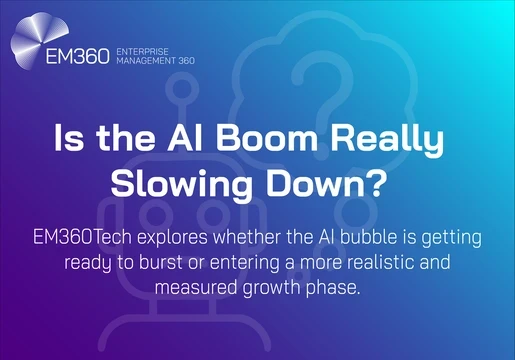With the introduction of virtual assistants (VAs) like Microsoft’s Copilot, Salesforce’s Einstein Copilot and a number of other vendor offerings this past year, VAs are becoming much more common business tools. VAs are software programs designed to perform tasks or services for an individual or a business. They are increasingly used in various fields for their efficiency, cost-effectiveness, and ability to handle repetitive or complex tasks. While GPTs and LLMs enable VAs, the technology behind VAs includes several key components:
-
Natural Language Processing (NLP): This is the foundational technology that allows virtual assistants to understand and interpret human language. NLP algorithms analyze the text or speech input, understand the context and intent, and respond in a human-like manner.
-
Machine Learning (ML): ML enables virtual assistants to learn from interactions and improve over time. They can personalize responses, predict user needs, and provide more accurate assistance as they process more data.
-
Speech Recognition and Generation: For voice-enabled virtual assistants, speech recognition technology is used to convert spoken words into text that the AI can process. Conversely, text-to-speech technology allows the assistant to communicate back to the user with synthesized speech.
-
Data Integration and Management: Virtual assistants often need to access and process data from various sources. They are equipped with the ability to integrate with databases, applications, and web services to retrieve, update, and manage data.
-
Automation and Task Management: Virtual assistants can automate routine tasks like scheduling meetings, sending reminders, or handling customer inquiries. This is achieved through programmed routines and integration with various business tools and platforms.
-
Security and Privacy Technologies: To ensure the confidentiality and integrity of data, virtual assistants incorporate security measures like encryption, authentication, and compliance with privacy regulations.

Benefits in A Business Context
-
Increased Productivity: By automating routine tasks, virtual assistants allow employees to focus on more strategic work.
-
24/7 Availability: They can provide round-the-clock service, especially useful for customer support and global businesses.
-
Cost Efficiency: Virtual assistants reduce the need for additional staff for repetitive tasks and can scale with the business without significant additional costs.
-
Data-Driven Insights: With access to large volumes of data, they can provide actionable insights and help in decision-making.
-
Personalization: AI-driven virtual assistants can offer personalized experiences to customers, enhancing satisfaction and loyalty.
-
Scalability: They can easily handle fluctuating volumes of work, making them ideal for businesses with varying demand.
VAs represent a convergence of various advanced technologies and are becoming an essential tool in modern business environments for their ability to streamline operations, enhance customer experiences, and contribute to overall business growth.
Business Use Cases
VAs have a wide range of impactful use cases in businesses, here are some of the most notable ones:
-
Customer Service and Support: VAs can handle routine customer inquiries, provide instant responses to frequently asked questions, and direct more complex issues to human staff. This improves customer satisfaction and reduces the workload on customer service teams, which can also improve employee satisfaction for roles that are often seen as stressful.
-
Administrative Tasks and Scheduling: VAs can manage calendars, set reminders, schedule appointments, and handle email filtering and responses. This frees up time for employees to focus on more strategic tasks.
-
Data Management and Entry: They can efficiently handle data entry tasks, update databases, and manage data retrieval, which helps in maintaining accurate and up-to-date information.
-
Sales and Marketing Assistance: VAs can assist in lead generation, follow-up communications, and even initial stages of sales processes. They can also help in distributing marketing materials and managing social media accounts.
-
HR and Recruitment Tasks: In HR, VAs can help in sorting applications, initial screening of candidates, and scheduling interviews, thus streamlining the recruitment process.
-
Financial Management: They can assist in invoicing, basic bookkeeping, expense tracking, and preparing financial reports, ensuring better financial management.
-
Personalized Recommendations and Services: In retail and e-commerce, VAs can provide personalized shopping advice, product recommendations, and customer support, enhancing the shopping experience.
-
Language Translation and Localization Services: For global businesses, VAs can offer real-time translation services, aiding in communication across different languages and cultures.
-
Supply Chain and Inventory Management: They can monitor inventory levels, place orders, and track shipments, helping to maintain optimal inventory levels.
-
Analytics and Reporting: VAs can gather data from various sources, generate reports, and provide insights, aiding in decision-making processes.
-
Healthcare Support: In healthcare, VAs can assist with appointment scheduling, patient reminders, and providing basic healthcare information. They can serve as nurse and / or physician assistants, greatly improving the patient experience and freeing up critical resources for more impactful work.
-
Training and Development: They can facilitate online training programs by providing individualized learning opportunities to employees, manage learning resources, and track employee progress.
These use cases demonstrate how VAs can significantly contribute to various aspects of business operations, making processes more efficient, reducing costs, and enhancing overall productivity.







Comments ( 0 )